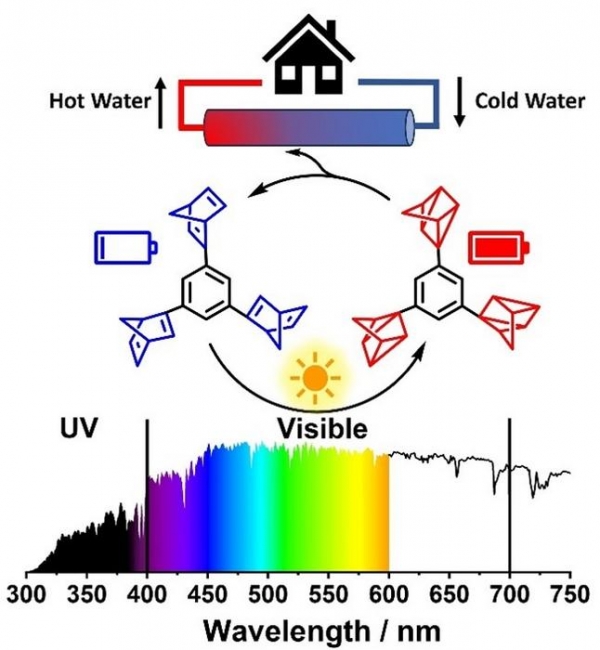Researchers of the universities of Mainz and Siegen have developed novel molecular systems for storing solar energy.
As stated by the International Energy Agency (IEA), approximately 50 percent of global final energy consumption is dedicated to heating. Yet, the utilization of solar power in this sector remains relatively low compared to fossil energy sources. An inherent problem limiting the widespread usage of solar energy is the intermittency of its direct availability. A promising solution comes in the form of molecular solar energy storage systems. Conventional thermal energy storage strategies store the energy for short periods, e.g., in the form of hot water. In contrast, molecular solar energy storage systems store solar energy in the form of chemical bonds, allowing it to be preserved for several weeks or even months. These specialized molecules – or photoswitches – absorb solar energy and release it later as heat, on demand. However, a key challenge for current photoswitches is the trade-off between energy storage capacity and efficient absorption of solar light, limiting the overall performance. To overcome this issue, research teams at Johannes Gutenberg University Mainz (JGU) and the University of Siegen present a novel approach in a collaborative study.
Decoupling the Absorption and Storing Processes of Solar Energy
The novel class of photoswitches was first introduced by the group of Professor Heiko Ihmels at the University of Siegen, demonstrating exceptional energy storage potential comparable to conventional lithium-ion batteries. However, their functionality was initially limited to activation by UV light, which constitutes only a small portion of the solar spectrum. The research teams at Mainz and Siegen now introduced an indirect light harvesting method, comparable to the function of the light-harvesting complex in photosynthesis. This incorporates a second compound, a so-called sensitizer, which exhibits excellent absorption properties of visible light. "In this approach, the sensitizer absorbs light and subsequently transfers energy to the photoswitch, which cannot be directly excited under these conditions," explained Professor Christoph Kerzig of the JGU Department of Chemistry.
This new strategy has increased solar energy storage efficiency by more than one order of magnitude, representing a major step forward for the energy conversion research community. The potential applications of these systems span from household heating solutions to large-scale energy storage, offering a promising path towards sustainable energy management.
Read more at Johannes Gutenberg University Mainz
Image: Storing energy in chemical bonds using a large fraction of the solar spectrum (Credit: ill./©: Till Zähringer / JGU)
Sci/Tech Energy Top Stories
